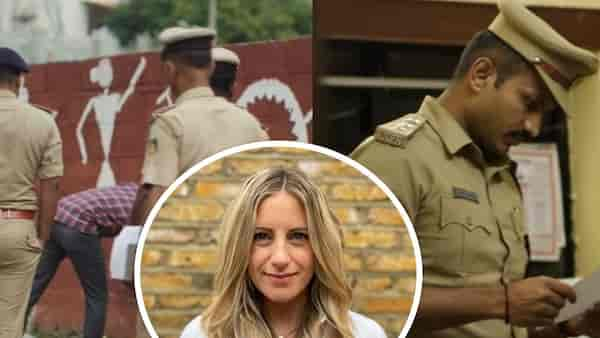Exclusive! Crime Stories India Detectives is representative of Bengaluru’s evolution: Claire Cahill
In a chat with us, the series producer explained the making process, including the fact that her team had no control over the cases they filmed.

Last Updated: 07.56 PM, Oct 04, 2021
In September, Netflix released the first crime documentary series from the perspective of an Indian police department. Originally released as a four-part series, Crime Stories: India Detectives is currently streaming with only three of the stories, following a court order. This interview with Claire Cahill, Series Producer at Minnow Films, who worked on Crime Stories: India Detectives, was conducted shortly before the court order.
Why did you choose Bengaluru as destination for the first series in India?
When we were thinking of cities this series could take place in, Bengaluru just seemed so appealing; it is in such a moment of modernization; there is no other city that is modernizing at such an exponential rate - population boom with the tech boom. When you are looking at making a series about crime, obviously when a city is going through that sort of rapid evolution, that is going to have an impact on crime and the pressures on the police force that is working there. We also felt very excited about finding a city in India that hadn’t been prominently represented in other programming and Bengaluru felt like a new and exciting city for the global audience certainly. That would also offer us a remarkable insight into police and crime and the universal theme of modernization in cities.
Was this your first-ever interaction with Indian law enforcement?
I have been to India a few times before and met police officers, but certainly to this forensic level in stations and working with them every day was my first experience. It was a positive one, we couldn’t have been more supported; or couldn’t have felt like we were working more together on a series.
There was real trust that was built over the course of the investigation in each station. That’s the thing... we took all the permissions that we needed from the senior levels and were allowed to make this series. But when you are actually making it, it’s the people on the ground, the inspectors, the constables, etc., who are investigating these crimes, who are going to be filmed every day, and in that, they were incredibly responsive to everything we wanted to film.
But the experience must have been different to the standard of law enforcement you are used to back home?
If you are looking for differences, there are many to be found. But what I found more remarkable were the similarities. Police around the world are facing huge pressures in terms of resources, when you scale that up in terms of the population and you still have only a few officers to solve those crimes, it’s logistically really hard to do. What I also found quite encouraging, like other police forces I have filmed previously, the officers connect with the cases on a professional capacity, but also in an emotional way and that was the key ambition of the series – to try and go past the preconceptions an audience might have of police in India and try and open that door a bit wider and show fairly and truly an investigation is conducted, as well as the limitations and pressures that are on those officers while they are doing their duty, which, hopefully comes across in the films.
How did you zero in on these four particular cases?
The main filming period was about five months, but we did a lot of research before. We had no control over what crimes came in. The process was that we would be notified by the DCP if a serious crime was reported; it was clear that we only wanted to follow such cases. It was also about investigations that were not going to be long-drawn; these officers are experts in their field and they have a sense whether something is going to be a longer investigation or if it was clear who the suspect is. We would wait to be notified and then we would arrive with the investigating officer and the inspector of the station where the crime took place and we’d just start filming. As we started filming, we would learn more about the cases. Obviously, there are cases we filmed that aren’t in the series, but we felt these four are not only interesting investigations that show vulnerabilities and fascinating aspects of human behaviour, they also challenged the police and weren’t easy ones to film. The fact that they allowed us to keep filming even when they kept hitting dead-ends, really does show that they were championing this series. Often, when you are following a case like that, everyone starts to get nervous if they’ve not found a suspect, but when you watch as an audience, those are the interesting cases that we wanted to stick with until we found a resolution.
Having seen the series, a personal observation is that the stories seemed a little lop-sided in representation, with the cases playing out amid the lower strata of society. Comment?
We had a set filming period, and, as I said earlier, we had no control over the crimes that happened in that time frame and had to follow the cases then. Also, it is really important to understand that everyone featured in the series has given their consent. We wouldn’t be broadcasting if we didn’t have all the necessary consents. Everyone involved in those stories has been informed about what’s being filmed, why and how that material is being shared. They have not only given their consent to be filmed in an observational manner, but many have also given interviews; that’s real commitment and choice to be involved in those films.
In terms of the demographic that’s included, one is a female software engineer, who is incredibly educated and saw the value in contributing. Obviously, that was an awful crime, but she is very representative of that changing Bengaluru, and the educated, ambitious, affluent younger generation. We couldn’t predict or dictate the crimes taking place in our filming period, but we have been able to offer representation of a variety of the public and crucially where consent was possible and was obtained.
How much of an eye-opener was it working on this series in India?
I have made a lot of series with police before, so in terms of being on crime scenes and working with police officers, there’s experience there. Every crime is different and even as filmmakers, it touches us personally as well. It was an amazing experience and we feel very lucky to have been given that level of access, which is very rare. We felt the responsibility of that. We hoped that the films would be fair and true representation of that side of the police. Lots of people have not seen the police in that sort of intimate way. Certainly, that level of access to an investigation, but also to them as people and how the cases affect them was eye-opening, but in a really positive way.
So, when can we expect you back in India for Season 2 of the series?
I’d be back straight away (laughs); we are just enjoying people’s response to Series 1. Me and my team would love to make a second series, but that’s probably a decision for other people to make, maybe Netflix can answer that one.

 Premium
Premium